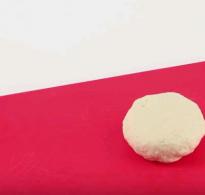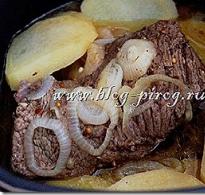"Singed" vodka and its consequences. How to distinguish real vodka from fake vodka
Everyone knows that the domestic market of alcoholic products is overfilled with low-quality vodka, or rather fake. In the people it is simply called "burnt". Unfortunately, the use of such a drink can lead to disastrous results, which can eventually result in disability or death. In this regard, it is important to buy vodka only in stores that you can trust, but still it is even more important to independently determine where high-quality vodka is and where crafts are. Of course, only special laboratory tests can absolutely determine the quality of vodka.
Low-quality (singed) vodka is a surrogate that is obtained using raw materials of the lowest quality. The production of such drinks is illegal, therefore it is carried out in clandestine workshops, where sanitary and hygienic conditions are not even observed. Criminal producers pass off fake vodka of well-known brands, sticking labels and excise stamps on it, as well as falsifying other documents. Facts are a stubborn thing, and they show that death occurs from a pallet in 53% of cases, since it causes severe poisoning. The production of such vodka requires a minimum of costs, so the profit is unusually high. Only one illegal workshop is capable of bringing its owner several million dollars a year.
There are two such concepts related to vodka, like “palyonka” and “leftist”. "Levak" is vodka of sufficient quality, but not listed in the company's reports. Such vodka has a lower price because it is not taxed at all. And, nevertheless, it is also undesirable to buy left-handed vodka, because under the pretext of selling such vodka, they can sell singed vodka. Such forgery is carried out by those swindlers who are not able to forge an excise stamp, without which it is impossible to hand over such vodka to the store. It is for this reason that they realize it to those who are too trusting.
How to identify low-quality (singed) vodka

To distinguish real vodka from fake vodka, there are several signs that should alert the buyer right away.
- Price. Before buying vodka, it is better to ask about its average price. When you find such an alcoholic product with a price one third lower, you should think about it, because it is doubtful that someone would just become generous. It is in such situations that they often fall for the purchase of burnt vodka. Basically, in every store the cost of vodka is approximately the same. Not always only the price is a sign of falsification, because the dealers, realizing this, set exactly the same price.
- Place of sale. Stores with a small sales area are more likely to take risks and sell counterfeit products. In large supermarkets, at least the customer is given a receipt confirming the fact of purchase. It is thanks to the presence of such a check that it is easier to prove the fault of the store, so supermarkets do not agree to sell paleonki. But despite this, you can still find a pallet in such a supermarket. This happens when the craft has the same certificates and excise stamps as high-quality vodka.
- Color. High-quality vodka is absolutely transparent, without sediment. To see if there is any sediment in the vodka that they want to buy, they turn the bottle over and look at it. No foreign particles, especially yellow or orange, should be observed inside. If the color of the product has been changed, then the real fake is in the hands.
- Lid (cap). A bottle of vodka, which was released at the factory, has a neat cap that does not scroll and does not let liquid through. A bottle with a ball-point dispenser most likely contains quality vodka, because it is much more difficult to counterfeit such a bottle outside of the production process.
- Label. Labels must be legible. She herself must be glued evenly. The label must contain information about the legal address and the address of production, about the composition of the alcoholic product. By the way, scammers often give out a surrogate for a new brand of vodka, about which there is very little information. When copying labels, the paper will be duller and the letters will be harder to read. It is important to pay attention to the date of the spill. It is indicated simultaneously on the cap and on the label. Of course, it must match. You should not be lazy to check, because this is badly reflected when purchasing burnt vodka.
- Producer Protection. Some self-respecting manufacturers specifically use additional protection systems that are practically not amenable to forgery. This includes relief application of coats of arms, quality markers and more. On the websites of manufacturing companies, those who wish to purchase high-quality vodka can familiarize themselves with information about it, with an additional protection system, after which, when purchasing vodka in a store, carefully examine it according to the prescribed characteristics.
It is quite difficult to distinguish real vodka from a fake fake, so you should pay attention to both the appearance and the smell of the vodka itself. A sharp and unpleasant smell should instantly alert, it is better to throw away and not use such vodka than to risk and lose health or life.
|
Low-quality and counterfeit vodka is a drink made from Extra alcohol and containing: aldehydes in an amount of about 6 mg/l (GOST - 3 mg/l), fusel oil 6-10 mg/l (GOST - 3 mg/l), methanol 0.05% (GOST - 0.03%) Approximately 120 million decalitres of vodka and alcoholic beverages are illegally produced in Russia. This means that about 600 tanks of unaccounted alcohol are in circulation every year. Every year in Russia there are 40-50 thousand only deaths of consumers from poisoning with surrogates, counterfeit vodkas. |
|
Dangerous impurities in vodkaThe increased content in fake vodka leads to the destruction of the internal organs of a person and, above all, the liver. Particularly dangerous poisoning occurs when the surrogate is made on the basis of methyl alcohol, which is a neurovascular poison. Its dose of 100 grams is lethal to humans. Even a small amount of this alcohol affects the optic nerve and the system of the membranes of the eye. Both methyl alcohol and ethylene glycol, which is part of antifreeze, like ordinary alcohol, can cause intoxication, but 10-12 hours after their use, signs of severe poisoning appear: headache, nausea, vomiting, unsteady gait, weakness (or short-term arousal) , blackout or even complete loss of consciousness. Death occurs from brain disorders (after 1-2 days) or kidney damage (after 1- 2 weeks). Even more dangerous is dichloroethane (ethylene chloride), 10– 15 grams of which cause irreversible changes in the liver and kidneys. Leads to poisoning and cognac surrogate, which is tinted with technical dyes. |
|
Samples of falsified alcoholic products often contain impurities of low-purity ethyl alcohol and non-food alcohols (hydrolytic and synthetic), which are considered highly toxic.
In terms of mortality from accidental poisoning with counterfeit products in the 2000s, the Yaroslavl region was the leader in the Central Federal District of Russia.
In 2012, after the end of the festive line, four 12-year-old students of the 18th Vladivostok school bought 2 bottles of cheap vodka in a stall, which turned out to be counterfeit. Two girls were taken to the hospital in a coma.
Differences between fake vodka and real
Counterfeit vodka has several characteristic differences from the real one:
For the most part, fake vodkas do not meet the standards for strength. Instead of 40 °, it is much less.
Often in bottles one can distinguish sediment, pile, films, etc., which indicates its production in artisanal conditions.
After two to three weeks, fake vodka becomes matte.
The markings of the corks and the inscriptions on the labels do not correspond to each other. So, for example, it happens that different manufacturers are indicated on them.
At home, when making fake vodka, glue is applied to the labels, in most cases, with a brush, and therefore the strokes are uneven. In factory vodka, if you look at the label from the inside, you can often see several even strips of glue. True, there is also a continuous coating of glue.
On factory vodka, the cap should not scroll around its axis (otherwise the bottle would be considered defective at the factory).
In fake vodka, the edges of the “alka” cap (with a “tongue”) are fitted loosely in some places and, moreover, with small “waves”. In real vodka, the lower edges of such a cap are smooth and fitted point-blank. The lacquered finish must not be scratched.
On the labels of screw bottles, the last two digits of the code indicate the name of the city (01 - Moscow, 02 - St. Petersburg, 62 - Smolensk, etc.). On the cap "alka", in addition to the name of the manufacturer, the name of the vodka is indicated (P - wheat, R - Russian, MO - Moscow special, etc.).
Fake vodka is missing or indistinct characters of the date of manufacture on the back of the label.
When opening a bottle of counterfeit vodka, the dispenser often remains in the opened cap.
Often a fake has suspicious names - Caution, Super, Petrovich, GAI, etc.
To detect fusel oils in suspicious vodka, add an equal volume of sulfuric acid to it. The blackening of vodka will indicate the presence of a large amount of fusel oils.
You can also dip blue litmus paper into the vodka. Its coloring in red indicates the admixture of acids, which are added to increase the "strength".
The consumer can test vodka by pouring it into the cap and holding a match. Normal vodka burns with a weak blue flame. Bad vodka will either flare up like gasoline, or it won't burn at all.
You can also just shake the bottle. If the vodka is overly diluted with water, then the bubbles in the bottle will be large. Normal vodka is shaken up with a "snake" of small bubbles.
If vodka has a sharp unpleasant smell, then it is better for the consumer not to drink it.
How to identify fake vodka
To determine the truth of the wine, you need to pour it into a small vial, close the neck with your finger and tip it into a glass of water. The finger is released into the water. If the wine does not mix with water, then it is natural. If the wine begins to trickle from the bubble into the water and descend to the bottom of the glass, then it is clearly fake. The faster the wine pours out of the bottle into the water, the coarser the falsification, and the more impurities in the wine.
To identify fake alcohol, you need to prepare a weak solution of potassium permanganate and then mix it with alcohol in a ratio of 4: 1. If at a temperature of 15-20 degrees alcohol turns pink in 5 minutes, this means that it is pure. If alcohol under the same conditions turns colored in less than 5 minutes, then the alcohol is counterfeit. The faster it stains and the darker it gets, the more dangerous it is. Poorly purified alcohol with a large amount of impurities turns dark brown instantly.
Vodka falsification is produced not only in Russia. In Ukraine, according to experts, every second bottle is a fake. It is recommended not to buy Ukrainian vodka below 26 hryvnia, which will obviously be fake.
It is better to buy vodka in specialized stores. In order to verify the quality of the product, the consumer should ask the seller for a certificate, which must be original, not copied. In addition, it is worth paying attention to which batch of goods the certificate was issued for.
Saving on quality vodka can be very expensive.The use of counterfeit is fraught with poisoning, dangerous not only for health, but also for the life of the consumer.
Unfortunately, the number of counterfeit alcoholic products on the shelves is very large. Poor-quality vodka contains impurities and fusel oils that poison the body. Sometimes "singed" vodka is made on methyl alcohol, and not on ethyl alcohol, as it should be. They taste and smell the same, but methyl is a poison. Methyl poisoning can lead to blindness and even death.
What signs indicate burnt vodka?
- The cap scrolls and does not fit tightly to the neck
- The filling stamp on the label does not match the stamp on the cap
- The label is glued crookedly, the adhesive strips are applied unevenly.
- The label is dull, the font on it is erased, dim (although at present the skill of counterfeiters has increased so much that this sign is not common)
- The liquid in the bottle has a yellowish or other color tint or is cloudy.
- Fake vodka often has sediment, suspension, foreign microparticles float.
- Fake vodka is less strong.
- 2-3 weeks after opening, vodka acquires a matte color.
How to understand that vodka is real?
- Pour vodka into a teaspoon, heat it on fire, and then set fire to the liquid. She should flare up. You need to let her burn and smell. If it smells sharp and unpleasant, then there are fusel impurities in vodka.
- Turn the bottle upside down and shake. If large bubbles form, it means that there is a lot of water in the vodka and it is of poor quality.
What should be on the label of real vodka?
On the label of real vodka, the date of bottling, the name and address of the manufacturer, the license number, the certification mark, and the strength of alcohol must be indicated.
How to recognize methyl alcohol poisoning?
At first, methyl alcohol intoxicates, like regular regular vodka. But after 10-12 hours, signs of severe poisoning appear: nausea, headache, vomiting, weakness, blurred vision, pain throughout the body, clouding of consciousness, fainting. Very often, people fail to recognize methyl poisoning, as these symptoms can also be mistaken for a hangover.
According to studies, about half of the total volume of vodka sold on store shelves is fake, and of rather poor quality, which can seriously harm health. Therefore, it is important to know the distinguishing features of high-quality vodka and fake. Knowing them, you will be able to distinguish good vodka even on the store shelf.
Fake vodka is usually made from low-quality ingredients in underground unsanitary conditions. Not only the alcoholic drink itself is faked, but also bottles, labels, excise stamps, imitating well-known brands. Production costs fraudsters many times cheaper, and sometimes the profit can even exceed the profit of the producers of the original vodka.
When shopping at a large reputable supermarket or specialty store, you have less risk of buying counterfeit alcohol. But still, even in this case, no one is insured, and you need to be very careful when choosing.
How to recognize a fake
There are signs by which you can determine the originality of vodka even before buying it, simply by examining the bottle:
1. Cost. Good vodka cannot be cheap. If you are going to buy vodka of a certain brand, it is best to check its average cost on the Internet. But there are also cases when fake alcohol is sold at the price of the original. In this case, you need to carefully examine the appearance of the bottle.
2. Place of purchase. In a small store or in the market, the probability of buying a low-quality fake is much greater. Therefore, refrain from shopping in such places.
3. Look at the vodka inside the bottle. The presence of sediment and turbidity is not allowed. High-quality vodka should be crystal clear without any shades in color. Turbidity or lack of purity in color indicates the poor quality of the alcohols and water used.
4. Cover. The quality of vodka is easiest to determine by the cap. Good alcohol always has a high-quality lid. It is tightly closed and adheres to the neck of the bottle. In fakes, as a rule, there is no dispenser, while in the original there is almost always a dispenser.
5. The label also matters. It should be glued evenly and neatly. All inscriptions are even and without errors. The back label must contain the address of the manufacturer, as well as the composition of the drink (any chemical ingredients are not allowed). The colors on the label should be bright. The date of the spill and the batch number must be indicated on the label and on the lid, they must match.
6. Excise stamp. It is obligatory in high-quality vodka to have a high-quality excise stamp. It should be glued evenly, the text on it should be neat and not smeared.

7. Many well-known vodka producers use various methods to protect themselves from counterfeiting. These are usually various engravings or relief images on the bottle, holograms. You can find out about all these means of protection on the official websites of manufacturers. There you can also see the original shape of the bottle and its design.

Given all these tips, you can choose high-quality vodka that will not harm your health, but will leave only a positive impression.






